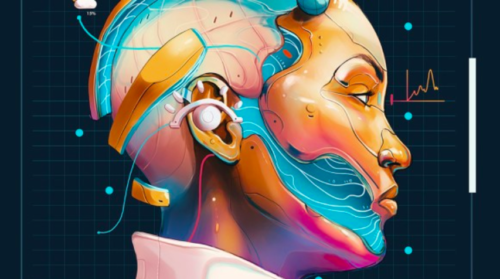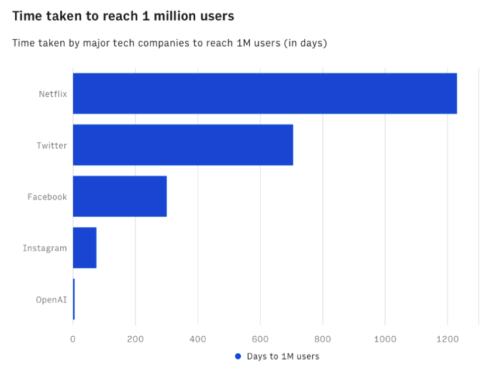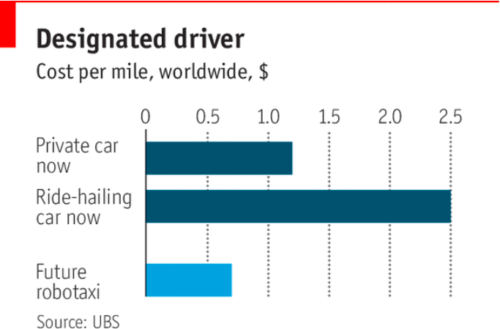

Mathematics and code form the fundamental building blocks of our modern world. Everything from the chair you’re sitting on to the paint on your walls is influenced by the precise measurements and colour quantification that rely on complex algorithms and data structures.
The technological advancements of the last few decades have been nothing shy of revolutionary, and Artificial Intelligence (AI) has played a central role in shaping and driving these innovations forward. Consider the intricate lines of code behind CAD software, which enable designers to create precise designs that can then be cut by machines with pinpoint accuracy. These machines use their own code to adjust the design based on real-time measurements, allowing for automated assembly and a level of precision that would have been unimaginable just a few decades ago. Sales of industrial robots in China alone reached 243,000 in 2021 and accounted for half of worldwide robot installations (China: Robot Installations Grew by 44 Percent, 2022).
But the power of AI extends far beyond just the manufacturing process. From medical imaging and diagnosis to self-driving cars and voice recognition software, AI is changing the way we interact with our world in profound ways. By leveraging the power of machine learning and deep learning algorithms, AI is enabling machines to learn and adapt to their environments, creating truly intelligent systems that are capable of performing tasks that were once thought to be the sole domain of humans.

Source: Nature.
Looking back in history at previous advancements in technology that required change from society, one that comes to mind is Volco’s gift to the world (other than the P1800 Cyan): the three-point seatbelt. The three-point seatbelt was first designed by Nils Bohlin for Volvo in 1959. Volvo gifted the patented design to all car manufacturers with the intention to save lives. Little more than 11 years later, the State of Victoria in Australia became the world’s first legislature to decree mandatory wearing of seatbelts.
Looking rather at a more relevant technological device, one can look at the calculator. Whilst they have been around for centuries, the first handheld calculator hit the retail market in 1972 (50 Years of Innovation, n.d.). It took 6 years for calculators to be allowed in A-Level examinations in the UK (Taylor, 1995, 68-83). At the time there was much debate over whether calculators should be allowed in examinations, but I am strongly of the opinion – that I believe many hold today – that the use of calculators in education has greatly advanced human understanding with vastly more content able to be covered.
Many will be aware of the relatively recent release of ChatGPT-3. “ChatGPT is an extraordinary large language model created by OpenAI that utilises deep learning algorithms to generate contextually relevant and coherent responses to natural language inputs. Its revolutionary ability to mimic human conversation has shocked many and pushed the boundaries of what was previously thought possible in the field of artificial intelligence (ChatGPT, 2023).” ChatGPT was released on November 30th, 2022. It took just 5 days to reach 1 million users. If you fail to find that impressive, it is reported that it took ChatGPT a mere 2 months to reach 100 million users, 7 months faster than TikTok (Hu, 2023). According to OpenAI, ChatGPT-3 was built on roughly 175 billion parameters placing it head and shoulders above its predecessors.

Source: Roch-Decter.
As we look to the future of AI and its potential impact on society, it is clear that we are entering a new era of technological transformation. With the upcoming release of GPT-4, we can expect to see AI playing an increasingly important role in fields such as medicine, finance, and education. For example, AI-powered medical diagnosis systems could help doctors to identify diseases more quickly and accurately, leading to more timely and improved patient outcomes. Similarly, AI could be used to analyse financial data and make investment decisions, potentially reducing the risk of human error and increasing profitability.
However, as AI becomes more advanced and widespread, it will also raise new ethical and social challenges. For example, the potential for job displacement due to automation is a concern, particularly for workers in industries such as manufacturing and transportation. There are also concerns around data privacy and algorithmic bias, as AI systems may inadvertently replicate or amplify existing societal inequalities. As we continue to develop and deploy AI, it will be important to address these challenges and ensure that AI is used in ways that benefit society as a whole.
Vehicle-to-vehicle (V2V) technology is a method of communication between vehicles that allows them to share data and radar scanning in real-time. This technology is on the verge of revolutionising the way we think about transportation and has the potential to bring about significant improvements in safety and efficiency.
One of the most significant advantages of V2V technology is the ability for vehicles to communicate with one another on the basis of safety. For instance, if one vehicle detects an obstacle or hazard on the road, it can instantly communicate this information to surrounding vehicles, allowing them to adjust their speed or trajectory to avoid the obstacle or hazard. This will significantly reduce the number of accidents on the road, making our roads safer for all users.

Source: Research Leap.
Moreover, V2V technology can help reduce traffic congestion. With vehicles able to communicate with one another, they can adjust their speeds to maintain a constant flow of traffic, which can help reduce bottlenecks and traffic jams. Referring to the vehicle detecting an obstacle in the aforementioned example, one vehicle in say Brooklyn, NY could notify vehicles en route from Queens, NY to take a different course. This technology can also assist in predicting traffic patterns and routing traffic to alternative routes, further reducing congestion.
In addition to these benefits, V2V technology has the potential to improve the efficiency of our transportation system. With real-time data sharing, vehicles can optimise their routes and reduce fuel consumption, making our transportation system more sustainable in the long run.
Furthermore, V2V technology can transform the way we think about transportation, paving the way for autonomous vehicles to become a reality. As more and more vehicles become equipped with V2V technology, it will be easier for autonomous vehicles to communicate with each other and navigate our roads safely.
V2V technology, in my opinion, is an exciting development that has the potential to bring about significant improvements in safety, efficiency, and sustainability in our transportation system. With the potential to reduce accidents, congestion, and fuel consumption, V2V technology is a crucial step towards creating a smarter and safer transportation system for all.
The advent of autonomous vehicles has sparked numerous discussions and debates on their potential impact on various aspects of our lives, including transportation, economy, and social norms. One topic that has raised concerns is the possible shortage of organ donors due to a significant reduction in fatal car accidents.
While it is true that many organ donations stem from unforeseeable or unavoidable events, such as congenital diseases or sudden health crises, a significant number of them are also the result of preventable and predictable causes, such as driving under the influence, using mobile phones while driving, or being distracted by a passenger. With the introduction of AVs, the number of car crashes is expected to decrease significantly, which would lead to a corresponding drop in the number of fatal incidents and near-fatal accidents that may require organ donations.
As such, it may be reasonable to assume that the reduction in car accidents caused by AVs will likely lead to a greater decline in the need for organ donations than in the availability of donors. It is, however, crucial to note that even with the implementation of AVs, accidents will still occur, albeit at a significantly lower rate than current figures.
Overall, while the shortage of organ donors is a valid concern, the potential benefits of AVs in reducing fatalities and improving road safety may significantly outweigh this drawback. Additionally, the medical industry can adapt to these changes by exploring alternative ways of procuring organs, such as increasing living donations or the use of 3D printed organs, which may be a more viable solution in the long run.

Source: The Economist.
If one were to imagine a city of only driverless vehicles, we could picture the scene with varying levels of detail. Fewer crashes, lower conjestion, less honking.
Research has found that it could lead to a reduction the cost per mile to just $0.70/mile (why drive when Uber is cheaper?) as well as a reduction in the number of cars on city streets by 60% due to the lack of ownership requirements – where they currently spend 98% of their life stationary (The Economist, 2018). There could also be a reduction in emissions by 80% and road accidents by 90%; “though some people will want to own their autonomous cars, about half of AVs will be shared robotaxis… globally, the “passenger economy” created by the convergence of autonomous vehicles and ride-hailing will be worth $7trn a year by 2050 (The Economist, 2018).
According to calculations, a reduction of up to 50% in the area of paved surfaces can be achieved by eliminating parking and implementing one-way, single-lane roads that loop through neighbourhoods (The Economist, 2018). The reduction in paved surfaces could facilitate the incorporation of more green spaces, thus enhancing biodiversity and improving water retention, ultimately mitigating the risk of urban flooding. Furthermore, the additional space created by this approach can enable suburbs to produce renewable energy through solar power or promote local agriculture.

Source: The Economist.
Society’s calculator and seatbelt integration is ultimately where I see V2V technology going, telepathic knowledge transversion between humans is not a thing (at least it is not right now), but getting vehicles of various make, models, and locations to communicate on the basis of safety is. Getting vehicles to transfer data and radar scanings simultaneously does not seem too far out of reach, and the benefits it could derive are colossal.
AI is poised to play an increasingly important role in our lives in the coming years, with the release of GPT-4 and other advanced AI systems driving innovation and transformation across a wide range of industries. However, as we continue to develop and implement AI technologies, we must also consider the impact on industries such as the arts, which may experience both positive and negative effects. On the one hand, AI has the potential to refashion the creative processes, such as generating music, art, and literature, and enable new forms of artistic expression. On the other hand, it may also lead to the loss of traditional creative jobs and exacerbate existing inequalities within the industry. As we embrace the potential of AI, it will be important to address the ethical and social challenges that come with this technology and ensure that we use it in ways to promote diversity, and inclusivity that benefit all members of society.
References
ChatGPT. (2023). A generated chatbot response [This was a generated chatbot response from the following input: ‘Could you please write three sentences about what chatGPT is, why it is revolutionary and has shocked many’].
China: Robot installations grew by 44 percent. (2022, September 20). International Federation of Robotics. Retrieved March 14, 2023, from https://ifr.org/ifr-press-releases/news/china-robot-installations-grew-by-44-percent
The Economist. (2018, March 1). Autonomous vehicles are just around the corner. The Economist. Retrieved March 14, 2023, from https://www.economist.com/special-report/2018/03/01/autonomous-vehicles-are-just-around-the-corner
50 Years of Innovation. (n.d.). TI Education. Retrieved March 14, 2023, from https://education.ti.com/en/snapapp/timeline
Hu, K. (2023, February 2). ChatGPT sets record for fastest-growing user base – analyst note. Reuters. Retrieved March 14, 2023, from https://www.reuters.com/technology/chatgpt-sets-record-fastest-growing-user-base-analyst-note-2023-02-01/
Libov, C. (1986, August 31). STATE ADDING A TOOL FOR 8TH GRADE MATH (Published 1986). The New York Times. Retrieved March 14, 2023, from https://www.nytimes.com/1986/08/31/nyregion/state-adding-a-tool-for-8th-grade-math.html
Roch-Decter, G. (n.d.). Time taken to reach 1 million users. https://rows.com/alberto_m/community-data/time-to-1-million-users-5hvSWQT8NbD4fgOSiN2eLN/live
Romero, A., Katalina, S., & Guide, S. (2021, September 11). GPT-4 Will Have 100 Trillion Parameters — 500x the Size of GPT-3. Towards Data Science. Retrieved March 14, 2023, from https://towardsdatascience.com/gpt-4-will-have-100-trillion-parameters-500x-the-size-of-gpt-3-582b98d82253
Taylor, M. (1995). Calculators and Computer Algebra Systems: Their Use in Mathematics Examinations. The Mathematical Gazette, 79(484), 68-83.
The CAINZ Digest is published by CAINZ, a student society affiliated with the Faculty of Business at the University of Melbourne. Opinions published are not necessarily those of the publishers, printers or editors. CAINZ and the University of Melbourne do not accept any responsibility for the accuracy of information contained in the publication.